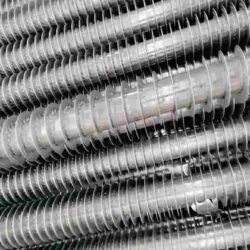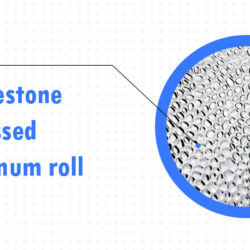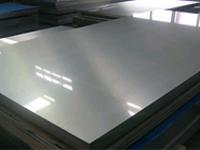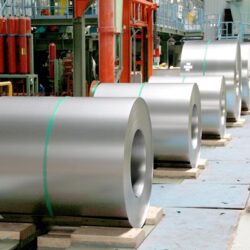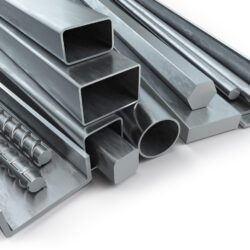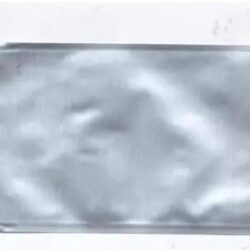Primary Effects of Alloying Elements on Metal Properties
It is very common for alloying elements to be added to certain metals in order to achieve specific characteristics required for an application. The inclusion of particular substances can change many properties ranging from strength to color to thermal conductivity. Doing this can make the fabrication of parts much easier and often improve the lifespan of a product. It is important to have some background on how this works though, as adding different elements can affect many different properties. Let’s take a closer look.
Strength
One of the most sought-after qualities of a good alloy, improved strength, is a great example of how alloying metals improves their properties. For example, if you look at gold as a pure metal, it is actually quite weak. If you alloy that gold with silver, however, you get a much stronger metal that can be used for long-lasting jewelry. In the industrial sector, you might instead add nickel or molybdenum to increase strength at high temperatures.
Conductivity
The conductivity of metals is also important to know when creating an alloy. This applies to both thermal conductivity and electrical conductivity. In most cases, adding another element to create an alloy will decrease the thermal and electrical conductivity. Some common metals used for this are zinc, manganese, nickel, and tin.
Ductility and Malleability
For many industries, two critical elements of a good alloy are its ductility and its malleability. You can use metals such as aluminum to increase ductility, allowing for easier wire making. Malleability is different in that it is a measurement of the material’s ability to deform under compressive stress rather than tensile stress. You can increase malleability through the introduction of metals such as iron, copper, and aluminum.
Corrosion Resistance
Alloy metal products need to be able to stand the test of time as well as outside elements. Many metals are quite susceptible to corrosion from water or air when they are pure. Alloying these metals with corrosion-resistant elements such as chromium, molybdenum, copper, and aluminum can greatly improve their ability to withstand oxidation and corrosion.
NICKEL
Now, let’s start the recipe over and add some Nickel. Nickel can have many effects on an alloy such as slightly increased corrosion resistance (not as much as Chromium) and increased strength at high temperatures. The most significant result though is the increased formability as a result of the increased Nickel content. Most stainless steels have Nickel percentage in the 8-10 percent range. As this percentage increases, the formability of the material will also increase.
CARBON
Compared to some of the other elements, Carbon content in stainless steel is relatively low, usually less than 0.2 percent. Increasing Carbon content will have many property effects. It increases hardness and strength and also improves hardenability. However, it can also have some effects part makers are not looking for. It will increase brittleness and can reduce both weldability and corrosion because of its tendency to form martensite.
NITROGEN
Nitrogen has arrived on the scene. The addition of this element will have many effects on an alloy. It also increases corrosion resistance but on a more localized level than a Chromium. It greatly improves pitting and crevice resistance, as well as inter-granular corrosion. Nitrogen can also increase strength and its’ typical content in stainless steel is less than 0.1 percent.
MOLYBDENUM
The addition of Molybdenum into stainless steel will improve pitting and corrosion resistance. 316 Stainless Steel typically has an increased content of this element and is know for its’ corrosion resistance. In addition, Molybdenum will improve strength at elevated temperature making it an often useful component in aerospace applications such as heat exchangers or exhaust systems.
MANGANESE
Manganese is another alloying element used to achieve certain properties. In addition to improving Nitrogen stability within the metal, this element increases hardenability and tensile strength but not to the same degree as Carbon.
SILICON
Silicon, in addition to benefiting strength and hardness, can be a key factor in improving oxidation resistance when content is increased in stainless steel. Being a ferrite stabilizer, Silicon is a great deoxidizing agent and can also improve corrosion resistance.
COPPER
With stainless steel, there are usually residual amounts of Copper present, but it is specifically added in some cases, i.e: 304Cu. The goal with these grades is to enhance corrosion resistance particularly in ocean environments as well as to produce precipitation hardening properties.
ALUMINUM
Aluminum, which can have high oxidation and corrosion resistance due to its passivation layer, is usually present in the Ferritic Stainless steels (400 series) for a different reason. The added Aluminum content in the 400 series results in increased ductility, as well as resistance to stress corrosion cracking.
TITANIUM
Titanium is an element that is primarily added to tie up Carbon, also known as carbide stabilization. This improves weldability because the carbon and titanium combination (titanium carbides) are stable and hard to dissolve in steel. This minimizes inter-granular corrosion occurrences.
COBALT
Cobalt, similar to Titanium, can help with carbide stabilization and improve welding. With Nuclear applications, Cobalt restrictions are necessary though as the element can become highly radioactive when exposed to radiation.
All these elements can play a crucial role in an application. Both the production and life cycle of a product are affected by which elements a metal is alloyed with. As you can see, there are many options when it comes to alloying and many effects on the properties due to these alloying elements. With all the different grades of stainless steel and special metals available, there is usually the perfect option for your product.
